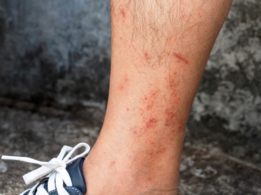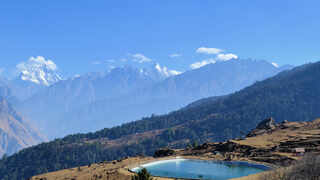Lunar Eclipse June 2020: Common diet beliefs and myths associated with Chandra Grahan
TIMESOFINDIA.COM | Last updated on - Jun 5, 2020, 09:00 ISTShare fbsharetwsharepinshareComments (0)
01/8Lunar Eclipse June 2020: Common diet beliefs and myths associated with Chandra Grahan
)

A lunar eclipse is a fascinating event and a sight to behold for sky gazers across the world! Now, after witnessing the first lunar eclipse of 2020 on January 10, sky enthusiasts are gearing up to enjoy the second lunar eclipse of the year on June 5 and 6. For the uninitiated, there are four lunar eclipses slated for the year 2020 and the other two will take place on July 5 and November 30. Chandra Grahan or lunar eclipse will be visible from India and it will be a partial penumbral eclipse.
02/8What is a partial penumbral eclipse
)

A partial penumbral eclipse takes place when only the Earth’s outer shadow (the penumbra) covers the moon and it becomes difficult to spot the eclipse as the outer shadow of the Earth is not as dark as the inner one known as Umbra. While the penumbral eclipse is completely safe to witness from naked eyes, it can also be mistaken as a full moon as the eclipse is harder to spot.
03/8When and where you can watch the Lunar Eclipse of June 2020 from India
)

The penumbral lunar eclipse will begin at 11:15 pm on June 5 and will go on till 2:34 am on June 6. The span of the lunar eclipse would be roughly around three hours and 18 minutes and can be seen from Eastern Africa, the Middle East, Southern Asia including India, and Australia. The maximum eclipse can be seen on June 6 at 12.54 am.
04/8What are the diet myths associated with Lunar Eclipse 2020 (Chandra Grahan)
)

There have been many myths and misconceptions associated with ‘Chandra Grahan’ (lunar eclipse) which have been an active part of stories we have been told growing up. It is believed that eclipses have a powerful impact on our bodies and several communities refrain from eating or drinking during the span of the eclipse.
05/8Radiations during the eclipse may contaminate the food
)

They also believe that certain radiations are emitted when the eclipse takes place which contaminates the edibles, making them unfit to eat. However, at the same time, it must be noted that there are no actual scientific proofs for these beliefs and they simply are promoted out of fear. We list down some of the diet myths and common beliefs associated with a lunar eclipse.
Avoid cooking or eating during the duration of the eclipse
Many communities believe that Lunar eclipse can cause emission of UV rays, change of wavelength and intensity of the light radiations which may eventually make food items unfit for consumption. This is why all cooking-related activities are usually avoided and even the food is not kept out in the open during the eclipse.
06/8Avoid eating pre-cooked food
)

Chandra Grahan is also looked to contamination and decaying of the food which is cooked before the eclipse. Hence, it is advised to not consume pre-cooked food items after the eclipse passes. It is important to note that there is no scientific backing for this claim as well.
07/8Add tulsi leaves to food and water
)

It is a common belief that adding tulsi (basil leaves) to food and water shields them from the harmful effects of radiation caused by the eclipse. While there is no scientific proof for the same, chewing on tulsi leaves is always a good idea as it is loaded with antioxidant properties. In addition to soothing sore throats, it can also protect the body against toxic chemicals and infections
08/8A pinch of turmeric will go a long way
)

Another superfood which can be added to our meals is the humble turmeric. Whether used as a powder or grated as root, it is known to contain anti-inflammatory and antioxidant properties.














































































closecomments
SIGN IN WITH
FacebookGoogleEmail